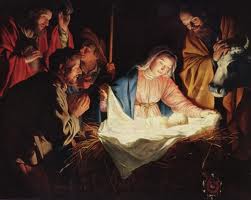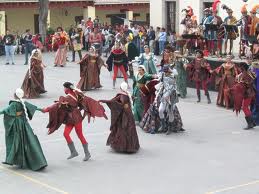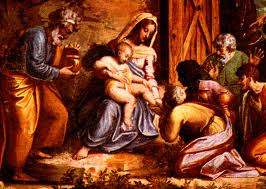Spanish Medieval Drama
Much like in the rest of western Europe, drama became a common form of popular expression developed in the Christian kingdoms of the Iberian peninsula alongside the sacral rituals imposed by the Church. Often used as interludes inserted in the middle of pious works, medieval farces tended to be far more light-hearted than the official performances they were meant to accompany.

The direct offspring of a predominantly oral society, where literacy was considered a pointless luxury and a dangerous privilege by the common people and the elite respectively, medieval drama was primarily concerned with religious themes, often depicting biblical scenes and staging popular or significant events, such as The Nativity, Epiphany, and so on.
Consequently, the earliest forms of medieval Spanish theatres were actually the often grandiose atriums of the churches, where stages of sorts were fitted to represent the relevant situation. Unlike the processions of the time, whose symbolism was strikingly visual and static, these early forms of Spanish theatre productions focused on specific actions or even verbal exchanges.
These exchanges would initially have been transformed into songs, chanted to the tune of familiar melodies, such as the Hallelujah, for instance, in the middle of the liturgy. Evidence has been found of this sort of liturgical representation taking place in various places of the peninsula, including the Kingdom of Aragon, Barcelona and Santiago de Compostela.
Nevertheless, these songs became so popular they soon developed into fully fledged performances conducted by the altar, at first, and then extrapolated from the liturgical celebration and taken outside, as it were, onto the atrium, where the performances would no longer be restricted to the time frames determined by the mass itself.

Several elements came to play in the progression of the original liturgical performance into an independent religious drama, not least the temperament of the public at large, which was commonly more responsive to the entertaining nature of the dramatic productions than it was to the scolding sermons of the preacher.
Another issue to consider is the existing tradition of minstrelsy, more cultivated within the courts of the time but also present among the lower strata of society, where the centre stage was taken by the lyricist, whose delivery was as important an ingredient for a successful performance as were the details of the actual tale he embarked on telling.
Consequently, what originated as an extended version of a pious act was progressively, and not so slowly, turned into less solemn events where jocund episodes were intermingled with sacred tales and where the protagonist was often the actor rather than the characters represented.
Inevitably, the tension between the profane and the religious elements in this kind of performances became such that neither band was satisfied: the clergy was outraged by the contamination of the message these performances were meant to deliver, and the people were dissatisfied by the shackles that the biblical themes provided to their entertainment.
The Farce Gains Independence
This was the crossroads in the development of Spanish theatre where the religious drama and the farce took separate ways, as the constrains imposed by the clergy were limited to the religious enactments. Thus, it emerged that a more effective and expressive way to direct the morbid imagination of the masses was to create short, stand-alone pieces designed to fill the gaps, as it were, during more sophisticated religious acts.
Fill the gaps - that was the operative word, farcire in Latin, and later farsa in the vernacular language.
Predictably, the farces produced by the people soon became excessively obscene, excessively lurid and vulgar for the clergy to condone them, even in the interludes of the religious dramas.
As a matter of fact, priests, who would often take part in both the sacred and profane performances during the early days of Spanish theatre, were eventually reprimanded for indulging in the entertainment of farces and, ultimately, the practice was curbed by the Church.
But eliminating popular forms of expression is a terribly demanding task, and as farces moved away from the atriums and into the towns, makeshift stages were set up in public squares, along the roads, even on carts. The bug of the theatre had caught, and nothing was going to stop it.

Slowly the plays were taken from spontaneous settings to more purposely conditioned, though similarly dingy, establishments. These were the origin of the corrales de comedias the equivalent in the peninsula to the courtyards in England, where the Spanish theatre was first developed, before there were actual theatres.
There are still some examples of medieval liturgical performances, most remarkably the Auto de los Reyes Magos, a piece focused on Epiphany and one of the earliest texts found in the Spanish vernacular. Among the farces stand out the encounters between Doña Cuaresma y Don Carnal traditionally staged during Carnival, often using the late transcriptions of Don Juan Manuel.
These texts can be found in English, but to truly appreciate them just take a good Spanish course in Spain and delve into them!
